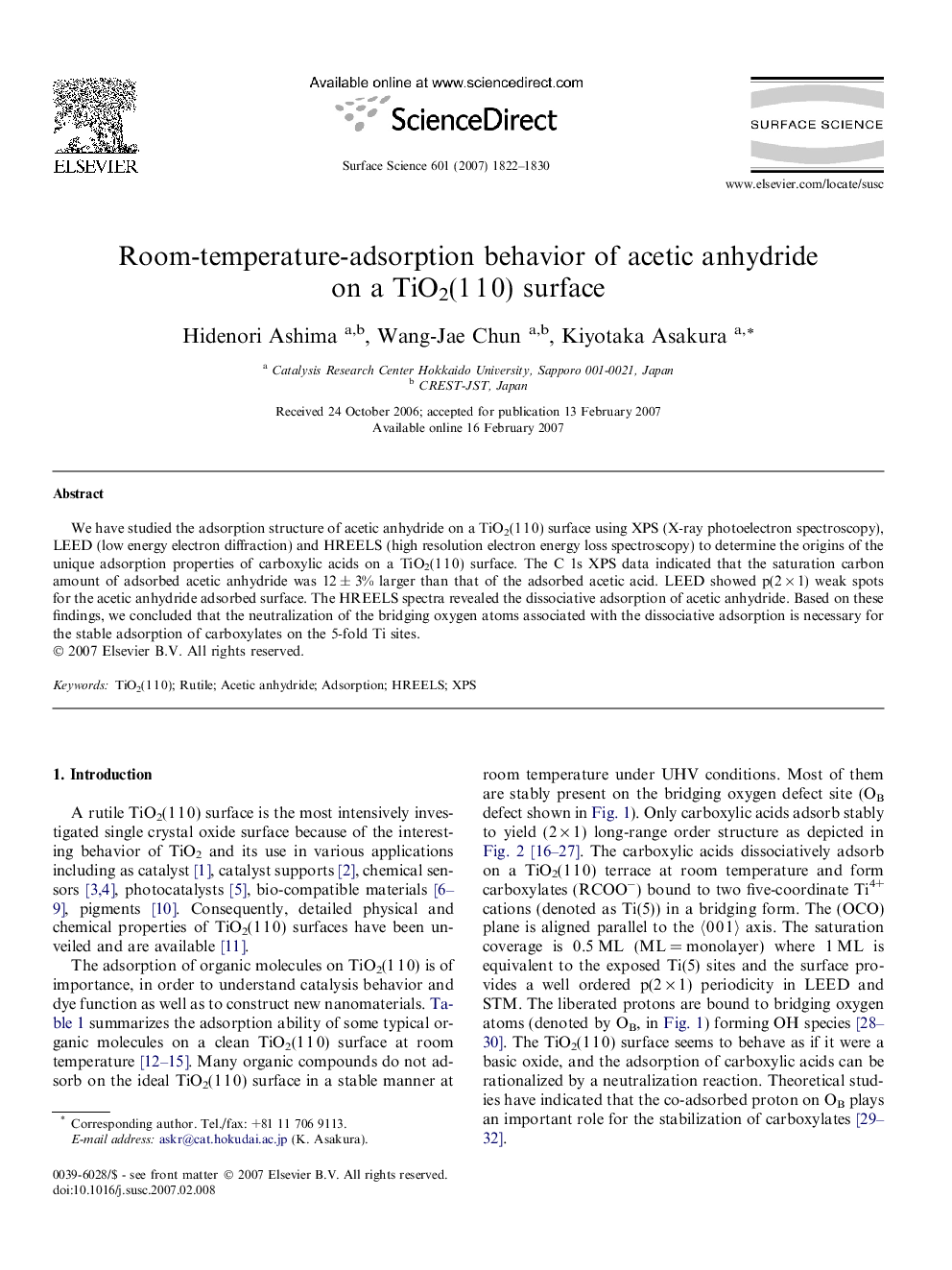| Article ID | Journal | Published Year | Pages | File Type |
|---|---|---|---|---|
| 5426040 | Surface Science | 2007 | 9 Pages |
We have studied the adsorption structure of acetic anhydride on a TiO2(1 1 0) surface using XPS (X-ray photoelectron spectroscopy), LEED (low energy electron diffraction) and HREELS (high resolution electron energy loss spectroscopy) to determine the origins of the unique adsorption properties of carboxylic acids on a TiO2(1 1 0) surface. The C 1s XPS data indicated that the saturation carbon amount of adsorbed acetic anhydride was 12 ± 3% larger than that of the adsorbed acetic acid. LEED showed p(2 Ã 1) weak spots for the acetic anhydride adsorbed surface. The HREELS spectra revealed the dissociative adsorption of acetic anhydride. Based on these findings, we concluded that the neutralization of the bridging oxygen atoms associated with the dissociative adsorption is necessary for the stable adsorption of carboxylates on the 5-fold Ti sites.
